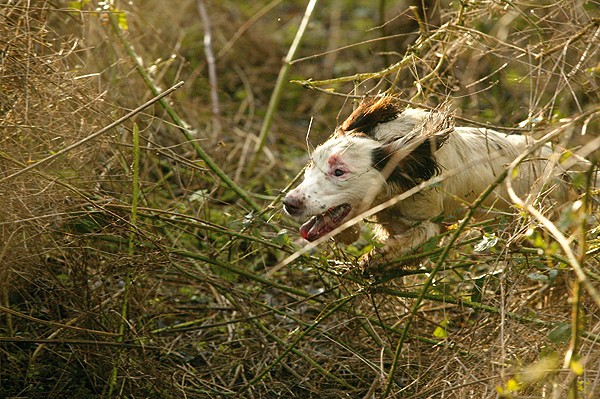Style: they either have it or they don’t

I have a friend I play tennis with whose style is awful; he doesn’t really have any. He does have terrific hand-eye co-ordination, and hits the ball with tremendous power, making him a great partner or a fearsome opponent. However, when it comes to serious competition, my friend is at a disadvantage because the best players are the most stylish. For proof you only have to consider Roger Federer.
These thoughts were triggered by an email from Elisabeth Kallevig who, with her husband Fredrik, runs Kennel Sletthallen, one of the leading working setter kennels in Norway. Founded over 35 years ago by Hans Rasmus Astrup, dogs from the kennel have won the King’s Cup — the top title in Norway — several times, along with more than 800 hunting awards in trials. Elisabeth wrote to point out to me that one of the differences between English setters in the UK and their counterparts in Norway is style. In most of Europe the style of each individual breed is very important, she says. In Norway, for better or for worse, we do not judge the style. We want dogs that find and handle the game expertly. Norwegian setters are mostly from American bloodlines, and you don’t have to be an expert in pointing dogs to see that they hunt differently from ours.
A cautionary tail
Perhaps the most obvious difference is apparent when the dog comes on point. We expect the dog’s tail to continue in a pleasing line level with its nose and back, but Norwegian setters are trained to point with their tail erect. As far as I am aware this doesn’t come naturally to them, so they have to be taught. It does make a pointing dog easy to see in cover, as the tail stands up like a flag.
The subject of style in working setters is discussed brilliantly by Raymond O’Dwyer in his book, The Irish Red Setter. He writes: There are things that touch the heart of man, things that inspire awe and wonder and cause a prickle behind the eyes or a constriction of the throat. They are sometimes difficult to describe to those who don’t have the same feelings, yet these are things that lift our spirits and cause us to strive to understand their cause.
O’Dwyer goes on to describe how the difference between a stylish dog and one that doesn’t have this magical quality is more than aesthetics, arguing that style is about efficiency, and can be seen in the manner the dog hunts for and finds game. He also believes that it is an inherited quality — “the proof of purity of blood”. Stylish setters are born with both the physique and instincts that allow them to work in such a way.
Style may be more apparent in pointers and setters than it is in other gundog breeds, at least to the uninformed observer, but it is equally important in spaniels and retrievers. It’s something the judges look for in trials, along with pace and steadiness. To win a spaniel trial, a dog must be more than just a steady gamefinder; it must also demonstrate style that pleases the eye.
Keeping the pace
Peter Moxon analyses this well in his classic, Gundogs Training and Field Trials. He writes: The best spaniel in the world from a gamefinding angle is an uninteresting animal unless he works with a stylish action and at a good pace; a pottering dog is a timewaster and fails to give that extra enjoyment to shooting over spaniels, which few men fail to obtain from lively, bustling dogs… A fast spaniel usually has drive, a most essential feature in a dog, which has to face punishing cover under difficult conditions. Moxon wrote those words more than 60 years ago, but they still ring true today.
Norwegian pointer and setter trials are very different from ours because game is shot and the dogs are expected to retrieve it. In contrast, British pointer and setter trials are simply a test of a dog’s hunting and pointing ability, and the ultimate test of steadiness. The sight of a falling bird is absent. I’ve never been to a Norwegian trial, but I would wager that the winning dogs invariably have more style than those that are less successful, simply because style, as Raymond O’Dwyer points out, equates to efficiency. The judges may not be looking for style, but it’s almost certainly going to be an attribute of the top dogs.
If you have never been to a pointer or setter trial, they do make a fascinating spectacle. You get a chance to view all the competition, even from the gallery.
The spring trials on grouse start in Scotland and northern England in March, moving south to East Anglia in April. Here, partridges provide the quarry. Unlike red grouse, redlegs prefer running to sitting, so satisfactory points are far fewer than when the same dogs are on the moors.
All the leading pointer and setter clubs hold spring pointing stakes in East Anglia. If you want to attend one, the Kennel Club’s open stake is good. This year it is being held on Friday 19 and Saturday 20 April at Six Mile Bottom, on the Suffolk/Cambridgeshire border.








